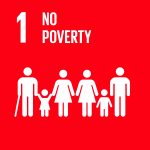Esta web utiliza cookies para que podamos ofrecerte la mejor experiencia de usuario posible. La información de las cookies se almacena en tu navegador y realiza funciones tales como reconocerte cuando vuelves a nuestra web o ayudar a nuestro equipo a comprender qué secciones de la web encuentras más interesantes y útiles.
Re-imagining the Purpose of business: Embedding UN Sustainable Development Goal 1: No Poverty
Description
Institution
Organizations/areas of the university involved
The University of Sydney Business School
Country
Australia
This case study relates to the “Poverty Alleviation and Profitability”, course embedded within a Master of Management (CEMS) programme, at the University of Sydney Business School. The purpose of this course is to challenge students to re-imagine the traditional assumption that the purpose of business is to increase shareholder wealth via various mechanisms including informal and formal reflections as well as in class debates. The SDGs provide a novel framework to facilitate this type of thinking by encouraging students to ask questions such as; why can’t businesses be ambidextrous and engage in both profits and alleviating social issues (e.g, poverty) simultaneously? Why do businesses exist and what is their role in society? Does business engagement with social issues such as poverty, hunger and gender equality have negative consequences? Can we be the generation that changes the way businesses address social issues, particularly poverty? The fundamental change that is required in business students to question traditional assumptions about business is difficulty. Therefore, when integrating social dimensions (through the SDG framework) I focus on the mental models of students and encourage questioning, as well as shifting and facilitating students in developing new interpretations that may result in changes in behaviours (Johnson, 2008). Therefore, I hope to systematically challenge the students to rethink their assumptions of business and career intentions in the context of SDGs by assessing their changes in mental models via a Transformative Learning approach as articulated by (Mezirow, 1997). This type of approach and thinking by students (future business leaders) becomes more important, Post Covid 19, as governments across the world look to business for economic recovery, which necessities engaging with social issues.
As the key theme of the course was that the SDGs, (particularly SDG1-No poverty) are a framework for business strategy, the emphasis was on discussing case studies that illustrated both effective and ineffective use of SDGs in their strategies. Furthermore, a flipped classroom approach was used whereby original videos of important proponents of SDGs and business strategy were developed, including C-Suite executives from Konica Minolta, IAG, Nonprofits as well as partners from Deloitte and KPMG.
Results and impact measured or expected
Business schools provide a mechanism for developing future leaders that can literally change the world. Based on this premise, my goals for this course are two-fold. Firstly, by encouraging students to question and reflect on some of the fundamental questions relating to purpose of business (based on the SDGs), I hope to play a small role in encouraging business students to challenge the status quo. Essentially, I encourage them to ask the question, where does my passion meet the world’s greatest need, at a profit? Which I believe will influence their decision making in their corporate journey. Secondly, I hope to see differences in their career choices. There are instances of students who have chosen to particularly focus on the SDGs including a student who initially worked in Africa, assisting micro-businesses to engage in poverty alleviation and more recently as a mentor in Google’s SDG accelerator program.
Connection with the SDG framework
SDGs provided a novel framework to challenge the students about their assumptions about the role of business in society. Therefore, at the macro level, SDG framework provided a philosophical foundation for engaging the students in questioning the purpose of business and how businesses can both engage with SDGs such as Poverty and make profits, simultaneously. At the micro level, I used both scholarly as well as practitioner literature to provide arguments for and against businesses engaging in poverty. We also discussed in detail how companies can engage with some of the specific targets within SDG1. My travels to the UN for its World Investment Forum in Geneva in 2014 and the UN Global Compact Leaders’ Summit in New York 2016, provided an appreciation for the importance of cross-sectoral partnerships and I proactively argue that businesses much engage with NFPs and governments in the “Poverty Alleviation and Profitability” course.
Barriers and follow up
The main barrier that I encountered was that this course was advocating an argument that is sometimes different to the rest of the business degree. In order to overcome this, I proactively advocate this idea at various levels including within the university and outside the university, including developing other courses such as a new curriculum in the marketing area relating to the SDGs, within a Bachelor Program. Secondly, students sometimes are unclear about why they are learning about poverty in a business degree, this cognitive dissonance sometimes is difficult to break. I try to overcome this by arguing and showing mainstream case studies that companies are still making profits, whilst alleviating social issues. I believe that the post COVID 19 business world will make the SDGs more important, not less important. Therefore, I will continue to develop curriculum that encourages students to re-image for profit businesses.
Education 4 SDG funciona gracias a WordPress


